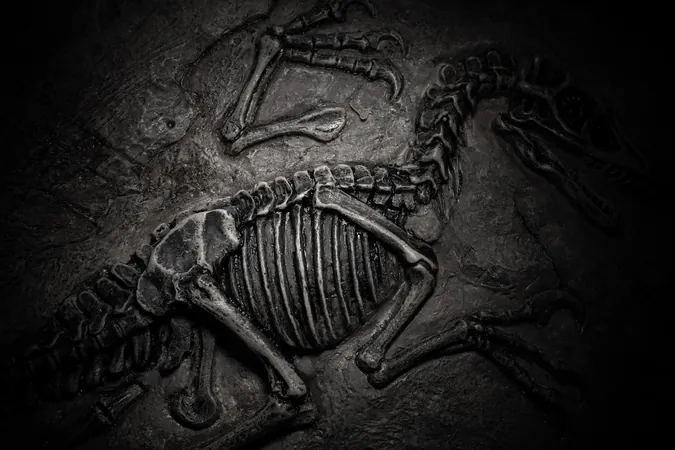
Shocking Rise of H5N1 Infections: What You Need to Know as 2025 Looms!
2024-12-24
Author: Michael
Shocking Rise of H5N1 Infections: What You Need to Know as 2025 Looms!
In a startling turn of events, U.S. federal agencies revealed a significant multistate outbreak of H5N1 avian influenza among dairy cows starting in March 2024. The troubling virus has reportedly infected no less than 876 cattle herds in 16 states, and a striking 65 individuals have tested positive for H5N1. Most human cases, often linked to contact with infected poultry or cattle, have so far been mild. However, concerns are rising!
On December 18, 2024, the Centers for Disease Control and Prevention (CDC) confirmed the first severe case of H5N1 in the U.S. This alarming case involved an individual in Louisiana who had exposure to infected birds in a backyard flock. It's worth noting that this case stems from a different strain of H5N1—one prevalent in wild birds and poultry, rather than the strain affecting cows.
Adding to the anxiety, a teenager in Canada experienced a severe form of H5N1 this past November, leading to acute respiratory distress. Experts are particularly worried about this case due to the virus's mutations that could increase its ability to infect humans. Richard Webby, an influenza virologist from St. Jude Children’s Research Hospital, voiced his unease, stating, "I’m not in the 'run to the hills' camp yet, but I am more uneasy about the H5N1 situation than I was before the case in Canada."
A Mutation Matter: The Growing Risk
As time passes, the risk of the virus mutating to become more transmissible among humans increases. Virologist Ed Hutchinson at the University of Glasgow explains that with more cattle infected and thus more potential for human exposure, the virus has greater opportunity to evolve. There's a mounting concern around a scenario where simultaneous infections could trigger genetic changes making H5N1 more adept at spreading among humans.
While the CDC confirmed that there has been no human-to-human transmission of H5N1 thus far, the organization maintains a watchful eye on the situation. Current guidelines encourage increased surveillance, especially among farmworkers and in raw milk at dairy-processing facilities.
An Ominous History of H5N1
Historically, more than half of reported human cases of H5N1 globally from 1997 until April 2024 have been fatal. The majority of mild cases so far in the U.S. have left researchers baffled, as severe illness is commonly observed in animals exposed to H5N1. Infections from this strain can be lethal to cattle and other livestock, raising serious concerns about zoonotic transmission.
California in Crisis: State of Emergency Declared!
California has emerged as a hotspot for H5N1, recording the highest numbers of infections in both animals and humans. This prompted Governor Gavin Newsom to declare a state of emergency in response to the escalating outbreaks. State veterinarian Annette Jones stated during a news briefing that understanding how the virus spreads between herds remains unclear.
Authorities have identified "high concentrations" of H5N1 in raw milk from infected cows, heightening fears of transmission through shared milking equipment and direct contact with farmworkers. Notably, earlier this year, 12 barn cats in Texas died after consuming H5N1-infected raw milk, and just last week, Los Angeles County confirmed the deaths of four house cats linked to recalled raw dairy products.
Surveillance Efforts: Wastewater as a Warning System
In a bid to stay ahead of the virus, public health officials have ramped up wastewater surveillance—an invaluable tool that has started to indicate H5N1 presence before infected herds are identified. This proactive approach is crucial, as it allows quicker responses to outbreaks and potential human exposure.
Conclusion: Immediate Caution Advised
While the current risk of human infection through consumption of unpasteurized milk is under scrutiny and remains undocumented, experts strongly advise against taking unnecessary risks. Hutchinson warns, “You shouldn’t be giving the virus a chance to use you as a foothold to become a pandemic virus.









 Brasil (PT)
Brasil (PT)
 Canada (EN)
Canada (EN)
 Chile (ES)
Chile (ES)
 España (ES)
España (ES)
 France (FR)
France (FR)
 Hong Kong (EN)
Hong Kong (EN)
 Italia (IT)
Italia (IT)
 日本 (JA)
日本 (JA)
 Magyarország (HU)
Magyarország (HU)
 Norge (NO)
Norge (NO)
 Polska (PL)
Polska (PL)
 Schweiz (DE)
Schweiz (DE)
 Singapore (EN)
Singapore (EN)
 Sverige (SV)
Sverige (SV)
 Suomi (FI)
Suomi (FI)
 Türkiye (TR)
Türkiye (TR)